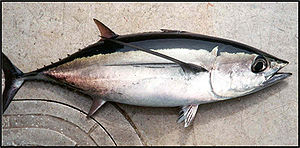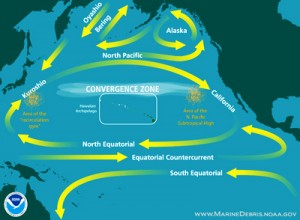EPA Halts Extra Radiation Monitoring; Focus Shifts To Imported Seafood
May. 4 2011
Jeff McMahon
Forbes Magazine

The Environmental Protection Agency has halted accelerated testing of precipitation, drinking water, and milk for radiation from the Fukushima nuclear disaster, the agency announced yesterday.
"After a thorough data review showing declining radiation levels related to the Japanese nuclear incident, EPA has returned to the routine RadNet sampling and analysis process for precipitation, drinking water and milk," according to yesterday’s Daily Data Summary.
Milk and drinking water will return to a regular quarterly schedule and will next be tested in three months. Preciptation will be tested monthly.
The agency will continue to monitor air samples—where radiation is likely to appear first—in near real time and post the results, but "EPA is evaluating the need to continue operating the additional air monitors deployed in response to the Japan nuclear incident," the summary states.
Mobile air monitors were deployed on Pacific Islands, in Alaska and along the West Coast to act as an early warning system for coming fallout.
Other U.S. radiation monitors have also recorded a decline in Fukushima radiation. Levels have dropped almost consistently in graphs posted by the Berkeley Radiological Air and Water Monitoring Team. The Community Environmental Monitoring Program based in Las Vegas last posted air filter results on April 18 after noting the radiation levels had peaked March 25.
But the situation at Fukushima remains unstable, with plumes of white smoke continuing to escape from two reactors.
"I would describe the situation as being not quite stable, but certainly not as highly dynamic as it was on march 21 when we last met on this subject," said Marty Virgilio, an NRC deputy executive director, in testimony before the commission Thursday.
Radioactive emissions continue at the plant, Virgilio said, and they are difficult to monitor accurately:
There’s still feed and bleed operations in progress. That is a somewhat dynamic situation, as well as unfiltered and unmonitored release paths that remain to be a concern at the Fukushima site.
"One of the things that make it difficult for the Japanese in responding to this event—and for us to understand the exact situation—is that there’s suspect accuracy and failed instrumentation at the site, affecting all the units, that really impair our ability to get a clear and consistent picture of the situation."
Japanese authorities have also been reporting declining levels of radiation in air and drinking water. The International Atomic Energy Agency issued this statement on gamma radiation at the plant:
A general decreasing trend has been observed in all locations since around 20 March."
And this statement on coastal seawater:
The analysis for almost all sampling positions has shown a general decreasing trend in concentrations of the relevant radionuclides over time."
But that "almost" is a big one: levels of Iodine-131 remained steady in coastal seawater from April 26 to April 30, the IAEA reported, a finding that belies Iodine-131’s short half-life and the dilution power of the ocean. I-131 was detected consistently at about 2.7 million picoCuries per liter. (For comparison, the EPA’s maximum contaminant level for I-131 in drinking water is 3 picoCuries per liter).
The Japanese dumped about 11,500 tons of water intentionally that contained the following concentrations of contaminants, according to the IAEA. (Amounts are given in megaBecquerels, one of which equals 27 million picoCuries):
- 5400 MBq/L of Iodine-131
- 1800 MBq/L of Cesium-134 and
- 1800 MBq/L of Cesium-137.
An unknown amount of contaminated water leaked into the ocean from a damaged reservoir.
Nothing Fishy

The ocean dumping has raised fears of seafood contamination, particularly in species that are imported or that migrate from Japanese waters. Three U.S. government agencies sought to quell those fears with a joint statement yesterday.
The threat of radioactive contamination reaching American waters is so low that the Food and Drug Administration and the National Oceanic and Atmospheric Administration do not plan to test American seafood for it, those agencies said in the joint statement with EPA:
FDA and NOAA do not anticipate contamination of living marine resources in U.S. waters at this time. For this reason, sampling of U.S. harvested seafood is not currently planned.
The joint statement follows an April 29 meeting between Secretary of State Hilary Clinton and Japanese Foreign Minister Takeaki Matsumoto. The two agreed to fight "rumors and reputation damage" that might harm Japan’s place in the supply chain, Matsumoto said.
FDA measures gamma radiation in 40 percent of seafood imported from Japan, according to the joint statement, and so far has detected nothing above background levels.
Japanese regulators have only found radiation in the sand lance, a fish that does not leave Japanese waters, the FDA said. None has been found in albacore tuna, a species known to migrate from Japanese waters to the U.S. West Coast:
The migration of tuna and other species of fish from the coast of Japan to U.S. waters would take days or months under the best of circumstances, and vessels fishing beyond U.S. waters must also travel several days to return to port. During that time needed for a fish contaminated by radiation in Japan to migrate, be caught and reach the market, the level of short-lived radionuclides such as I-131 would drop significantly through natural radioactive decay. To date, no significantly elevated radiation levels have been detected in migratory species, including North Pacific albacore.
The agencies said they would respond quickly if radioactive materials were deposited into the Kuroshiro Current, which flows from Japan to the U.S. West Coast, but it was not clear how they would determine that had happened.
"To screen for longer term impacts, NOAA’s National Ocean Service and the Environmental Protection Agency are exploring approaches to monitor seawater and sediment in areas along the western U.S. coast, with sampling stations co-located with sites in NOAA’s Mussel Watch program."
The nuclear engineers at Berkeley have already begun testing seaweed on the Northern California Coast, they announced this weekend. Most foods passed their most recent food tests, but they reported a tiny amount of radioactive cesium in strawberries:
There are no isotopes from Japan detected in the new spinach, kale, arugula, and seaweed samples. The new strawberry samples from 4/20 show no I-131, but Cs-134 and Cs-137 are present. The highest levels of radioisotopes detected would require the consumption of more than 3 tons of strawberries in order to receive the same equivalent dose as a cross-country airplane flight.
Rain on Both Coasts
EPA also released a new batch of test results yesterday, reporting non-detects in samples from 16 of 18 U.S. cities, with these two exceptions:
- 7.2 picoCuries per liter of iodine-131 in rainwater collected April 20 in Boston.
- 5.2 pCi/L of cesium-134 and 5.5 pCi/L of cesium-137 in rainwater collected April 22 in Richmond, CA.
The EPA’s maximum contaminant level for both of these radionuclides—3 pCi/L for drinking water—anticipates continuous ingestion over a 70-year lifetime.
"It is important to note that all of the radiation levels detected by RadNet monitors and sampling have been very low, are well below any level of public health concern, and continue to decrease over time," EPA said.
This document contains copyrighted material whose use has not been specifically authorized by the copyright owner. SEED Coalition is making this article available in our efforts to advance understanding of ecological sustainability, human rights, economic democracy and social justice issues. We believe that this constitutes a "fair use" of the copyrighted material as provided for in section 107 of the US Copyright Law. If you wish to use this copyrighted material for purposes of your own that go beyond "fair use", you must obtain permission from the copyright owner.


